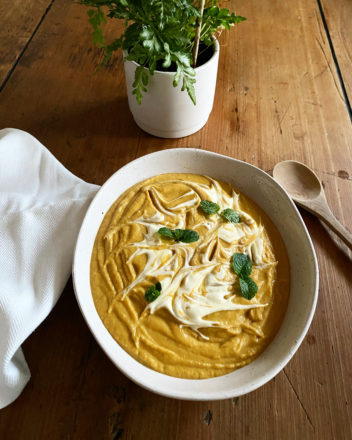

The first time I heard the term mindfulness, I was at a yoga studio many moons ago. The teacher threw the word around like we were meant to understand what it meant. Initially, I thought it all sounded a little woo-woo; obviously, I’m present, I’m here, aren’t I?
Sometime later, after discovering my own yoga practice and becoming a yoga and meditation teacher and clinical nutritionist, I learnt that mindfulness is more than your physical presence. Mindfulness is about the here and now, as opposed to constantly worrying about the future or fretting about the past, but it also encompasses your mind and your body being where you are, right now; so you can tune in and notice your body sensations, observe your surrounding environments and be a sightseer of your personal thoughts.

Fast forward to 2020, where mindfulness is a term recognised by health professionals, psychologists, mental health experts and huge corporate companies. What was once a Buddhist way of life has turned into a concept embraced around the world, and I think it’s about time!
If you’re not sure if mindfulness is for you, ask yourself the following questions:
- Do you ever worry about the future?
- Do you ever fret about the past?
- Do you ever find yourself wandering off when you’re in a conversation with someone?
- Do you feel like you’re rushing through life?
- Are you a human?
If you’ve answered yes to any of the above, mindfulness could be a wonderful tool for you to incorporate into your life.
When you’re not mindful, it’s easy to slip into anxiety and stress or depression, inhibiting you from enjoying where you are now. Mindfulness is the exact definition of stopping and smelling the roses; it’s about savouring the little moments, like the sun shining on your skin while you laze on the couch on a Sunday morning, or enjoying a delicious weeknight meal with your family.
Mindfulness isn’t anything fancy, or out of reach, it’s something you can practice every day, starting from now. Mindfulness can apply to the way you talk to yourself, the way you breathe, the way you engage with other people, the way you move and even the way you eat.
Mindful Eating
The modern diet and way of living has made it increasingly easy to eat-on-the-go and ‘save time’. We’re always looking for new ways to be more efficient and use our time more wisely, but this takes away from the enjoyment of simple moments. Eating on the run and speeding through lunch may save us time, but it limits the time we have with ourselves and our ability to foster a relationship with self; a relationship that’s hard enough as it is with our dependency on screens.
Mindful eating is about slowing down and savouring food. It’s not about doing 1-hour meditations twice a day, it’s about starting slow and making maintainable steps towards being a little more mindful every day.
Why bother with mindful eating?
- Mindful eating helps signal to the brain that you’re full, so you don’t overeat or under eat.
- It helps us slow down when we chew, so you can actually enjoy the food you’re eating, rather than inhale it (been there, done that!).
- Improves the gut-mind connection.
Diet culture has made it incredibly difficult for us to understand when we’re hungry or full, and when we’re eating to try to solve another issue.
If you’re feeling out of touch with your hunger cues, try this exercise next time you find yourself with banana bread in one hand and a packet of chips in the other.
- Notice physical hunger cues, like a drop in energy or a grumbling stomach.
- If what you notice is actually an emotion stirring up, such as stress and not hunger, what can you do instead to deal with the stress? Maybe it’s going for a walk around the block, playing music or doing a short meditation.
- Look out for any triggers that may have set you off.
Understanding your need and a suitable response is the first step on the mindful eating journey and will help put you in touch with your second brain – your stomach!

Once you’ve identified that you’re hungry (hanger mode: activated), find a comfortable spot to sit down to eat. It’s a known fact that you’ll eat more when you’re standing than when you’re sitting – you’ll know what I mean if you ever find yourself standing in front of your chocolate cupboard at the end of the day!
Put your food on a plate, so you’re able to visualise how much you’re eating; awareness is essential. If you’re working at home, mark the difference between ‘work time’ and ‘break time’ by lighting a candle, closing the computer, playing music and sitting at the dining table. If you’re eating while you’re out, find a comfortable spot to sit, turn your phone down and notice your surroundings.
Be mindful of the way you talk to yourself before you eat. Negative self-talk can actually alter the structure and function of our brain, preventing you from making sustainable life changes, like mindful eating. The most significant judge you’ll ever have in this life is always yourself, so please, be kind. Remember that foods aren’t necessarily good or bad, they’re just foods.

Before you dig in, take three deep breaths with your eyes closed. Inhale deeply until the breath reaches the pit of your belly, and then exhale slowly. This increases present awareness and unlocks your parasympathetic nervous system, which we need for improved digestion.
Try to chew slowly, focusing on each mouthful. If you’re someone who could win a prize for how quickly you gobble down food, put down your fork between bites or try eating with your non-dominant hand. Focus on the delicious flavours and textures of each bite; you can even embrace your internal food critic. Taking small bites give you more chance to enjoy the food you’re eating.
Now that you’re done eating notice how you feel, without guilt or judgement. Ask yourself questions such as do you feel energised and revitalised, sluggish or tired? Observing how you feel after a meal can give you a guide on which foods are more or less beneficial for your body.
Ready for a mindful meal? Start with soup! Soups are great for when you’re starting to eat mindfully, as you’re forced to slow down because of the heat. Once you take your first delicious slurp of my Roasted Pumpkin and Cauliflower Soup, you’ll want to enjoy every single nutrient-rich and warming mouthful.

Roasted Pumpkin and cauliflower soup
Serves 3
Ingredients
- 1 small Cauliflower, roughly chopped
- 1/2 butternut pumpkin sliced
- 1 whole garlic bulb (optional)
- 1 star anise chopped
- 1 tsp cumin
- 1 tsp lemongrass powder
- 1 tsp fennel seeds
- 1 tsp chopped ginger
- 1 tbs olive oil
- 1 litre vegetable stock
- 2 tbs lemon
- 2 tbs wheat-free tamari
- 1/4 cup creme fraiche or coconut yoghurt for dairy-free
- Mint leaves to serve
Method:
- Place vegetables and garlic on a baking tray and drizzle with olive oil.
- Sprinkle cauliflower with lemongrass, fennel and ginger.
- Cover pumpkin with star anise and cumin
- Bake both of them on a tray in the oven for about 30 mins on 200 degrees Celsius or until golden.
- Remove from oven
- Place vegetables in a saucepan on stovetop add stock lemon and tamari and bring to a gentle boil.
- Turn heat off let cool slightly and whizz in a blender until smooth.
- Serve in bowls with a dollop of creme fraiche or yoghurt of choice.
- Top with mint 🌱
- Please enjoy with your feet up in a cozy spot. Let me know if you make it and what you think in the comments below.
Enjoy! Lee xo

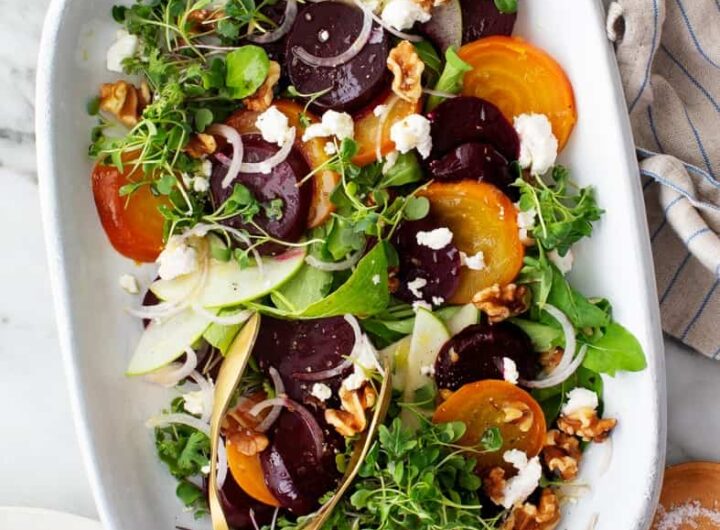 Healthy Eating Nutrition Tips for Busy Lifestyles
Healthy Eating Nutrition Tips for Busy Lifestyles 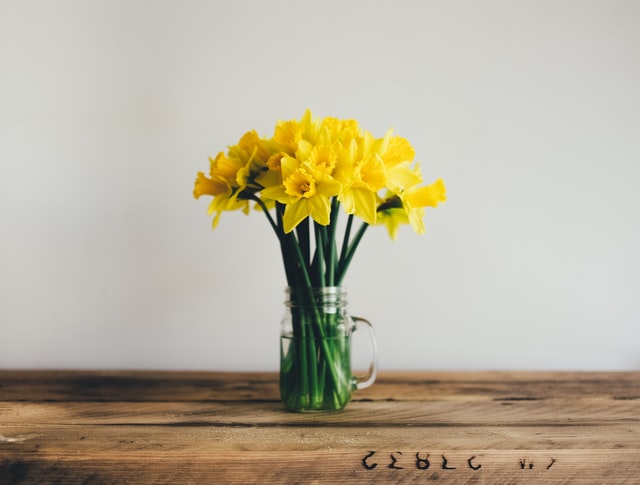 Tech for a Tranquil Mind – Apps and Devices for Mental Wellness
Tech for a Tranquil Mind – Apps and Devices for Mental Wellness  Is it time to embrace Quiet Living?
Is it time to embrace Quiet Living? 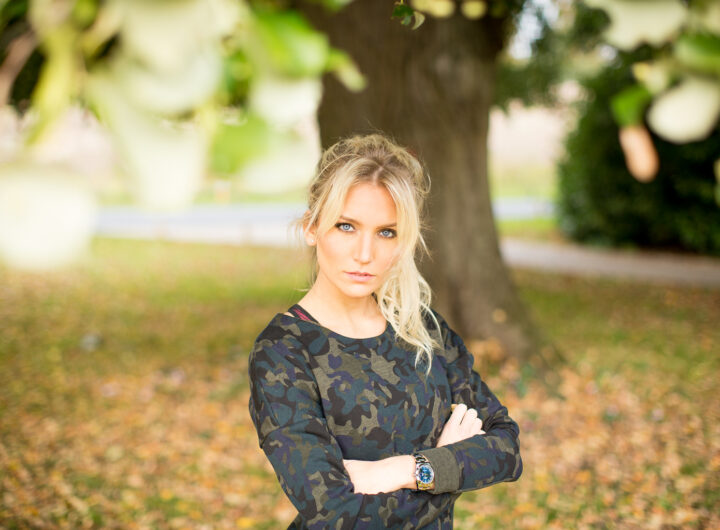 Escaping the procrastination trap-how to start your focus era
Escaping the procrastination trap-how to start your focus era 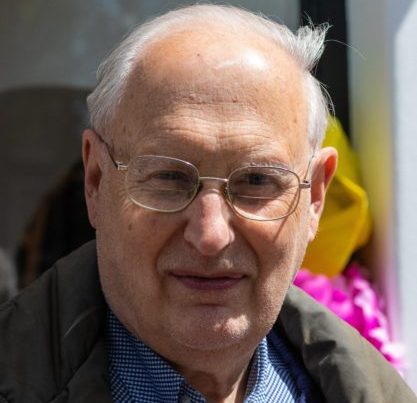 Managing Type-2 Diabetes
Managing Type-2 Diabetes  The 15-Minute Movement Habit -Simple Desk Exercises for Working Bloggers
The 15-Minute Movement Habit -Simple Desk Exercises for Working Bloggers  Learning More About Magic: The Gathering – Kindred Decks
Learning More About Magic: The Gathering – Kindred Decks  The Most Popular Planes in Magic: The Gathering
The Most Popular Planes in Magic: The Gathering